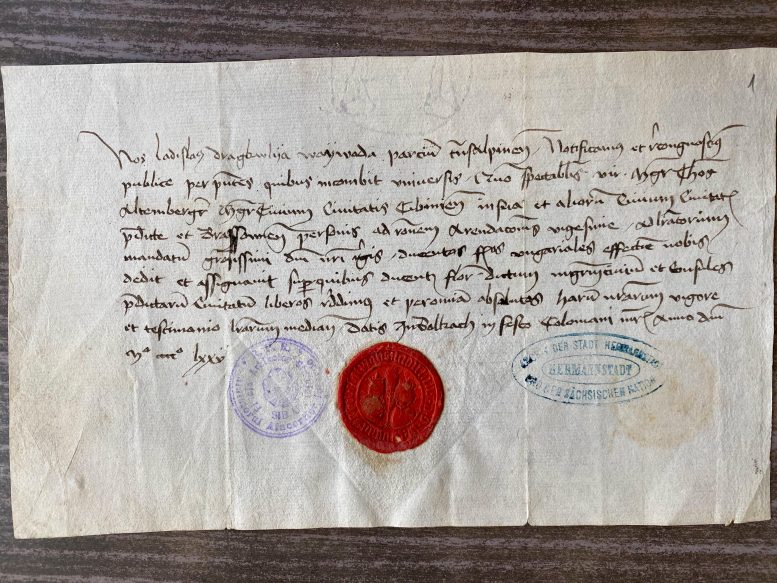
Unveiling Vlad the Impaler’s Health Through His Letters
Vlad III, often referred to as Vlad the Impaler, was a 15th-century prince and commander whose chilling reputation is believed to have inspired the creation of the literary vampire, Count Dracula. Now, a scientific examination of his letters is giving new insights into his health. Researchers now reporting in ACS’ Analytical Chemistry, say the results suggest that Vlad probably had skin and respiratory conditions and could have even cried literal tears of blood.
The legendary figure’s official title was Vlad III, Voivode of Wallachia, and he lived in the southern region of Romania in the mid-1400s. Of course, there’s no evidence that Vlad III was a vampire, but he was feared for his ruthlessness. Some estimates place his death toll at over 80,000 people, many dying by impalement, earning him his nickname.
He was also referred to as Vlad Drăculea, translating to “the son of the dragon,” which many believe inspired the eponymous character from the novel Dracula.
Investigating History Through Scientific Analysis
Though over 500 years have passed since Vlad’s reign, some artifacts have remained, including several letters he penned at different points throughout his life. The molecules and proteins present on documents and other relics like these can provide scientists with a unique understanding of the life and times of people from the past. So, Vincenzo Cunsolo and colleagues wanted to, for the first time, investigate these letters to learn more about the health of the infamous Vlad Drăculea, as well as the environment he lived in.

To uncover the letters’ secrets, the researchers used a specialized plastic film called EVA, or ethylene-vinyl acetate, to extract any proteins or small molecules from the paper without damaging it. These extracts were then analyzed with mass spectrometry, allowing researchers to characterize thousands of different peptides. Of these, the team focused on those with the most advanced deamidation, a form of protein degradation that occurs with age.
Proteins Reveal a Glimpse Into Vlad’s Health
The most degraded proteins were likely the oldest, and therefore, they are the most likely to be from Vlad compared to newer, less-degraded proteins that could have originated from other people handling the letters more recently. A total of 16 proteins were of human origin, relating to skin, breathing and blood.
The researchers say that the data they acquired, although not exhaustive, suggest that Vlad could have suffered from respiratory issues, and potentially even a condition called hemolacria, which would have caused him to cry tears of blood — quite fitting for such a spooky character.
Other proteins identified by the team indicate that he could have been exposed to certain, plague-related bacteria or even pesky fruit flies. In all, the researchers say that this work helps shed light on some important documents of the past, as well as the people who may have written them.
Reference: “Count Dracula Resurrected: Proteomic Analysis of Vlad III the Impaler’s Documents by EVA Technology and Mass Spectrometry” by Maria Gaetana Giovanna Pittalà, Antonella Di Francesco, Annamaria Cucina, Rosaria Saletti, Gleb Zilberstein, Svetlana Zilberstein, Tudor Arhire, Pier Giorgio Righetti and Vincenzo Cunsolo, 8 August 2023, Analytical Chemistry.
DOI: 10.1021/acs.analchem.3c01461
The authors acknowledge funding from the University of Catania. They also acknowledge the Bio-Nanotech Research and Innovation Tower of the University of Catania for the use of a mass spectrometer.
Never miss a breakthrough: Join the SciTechDaily newsletter.